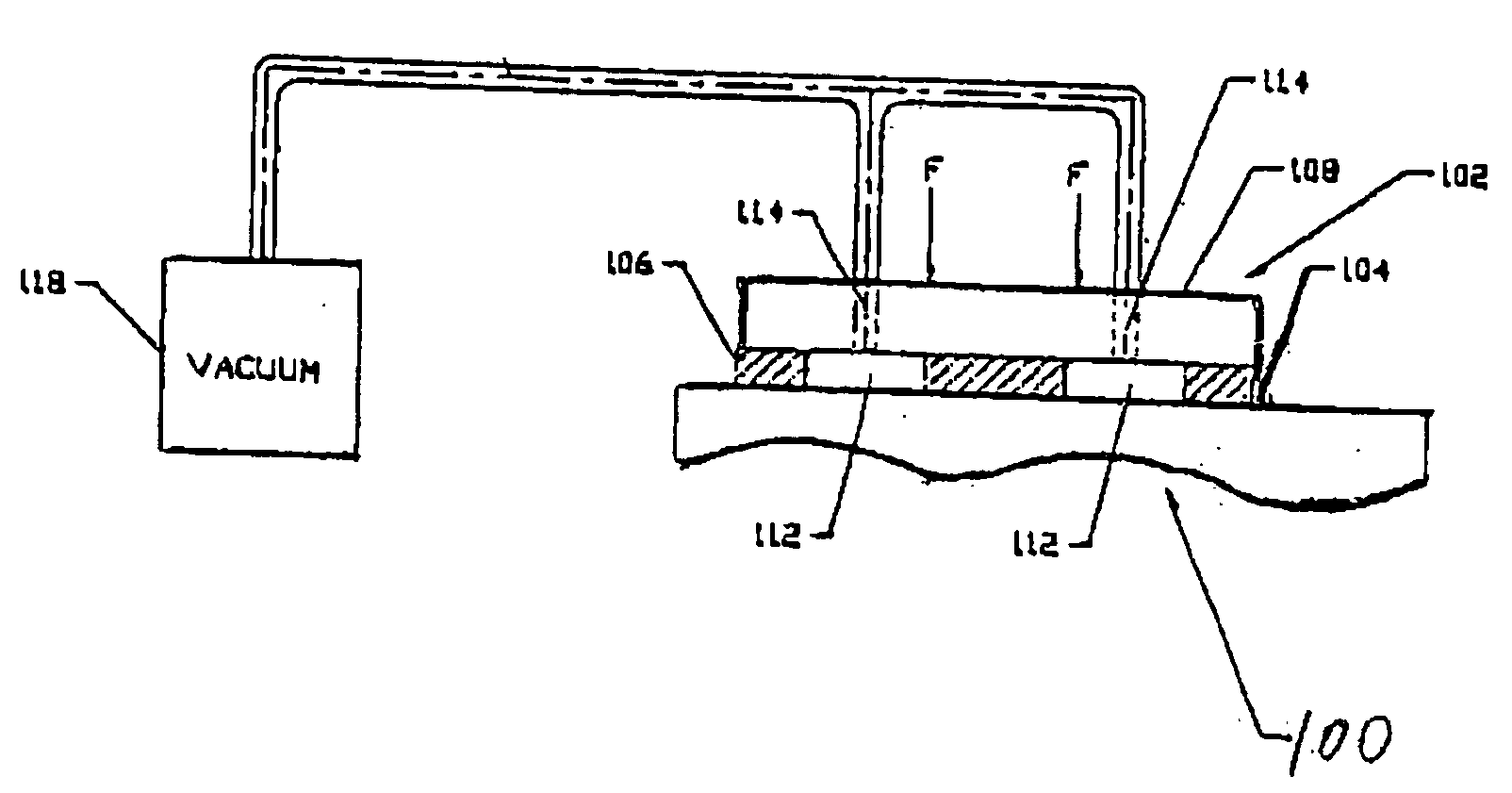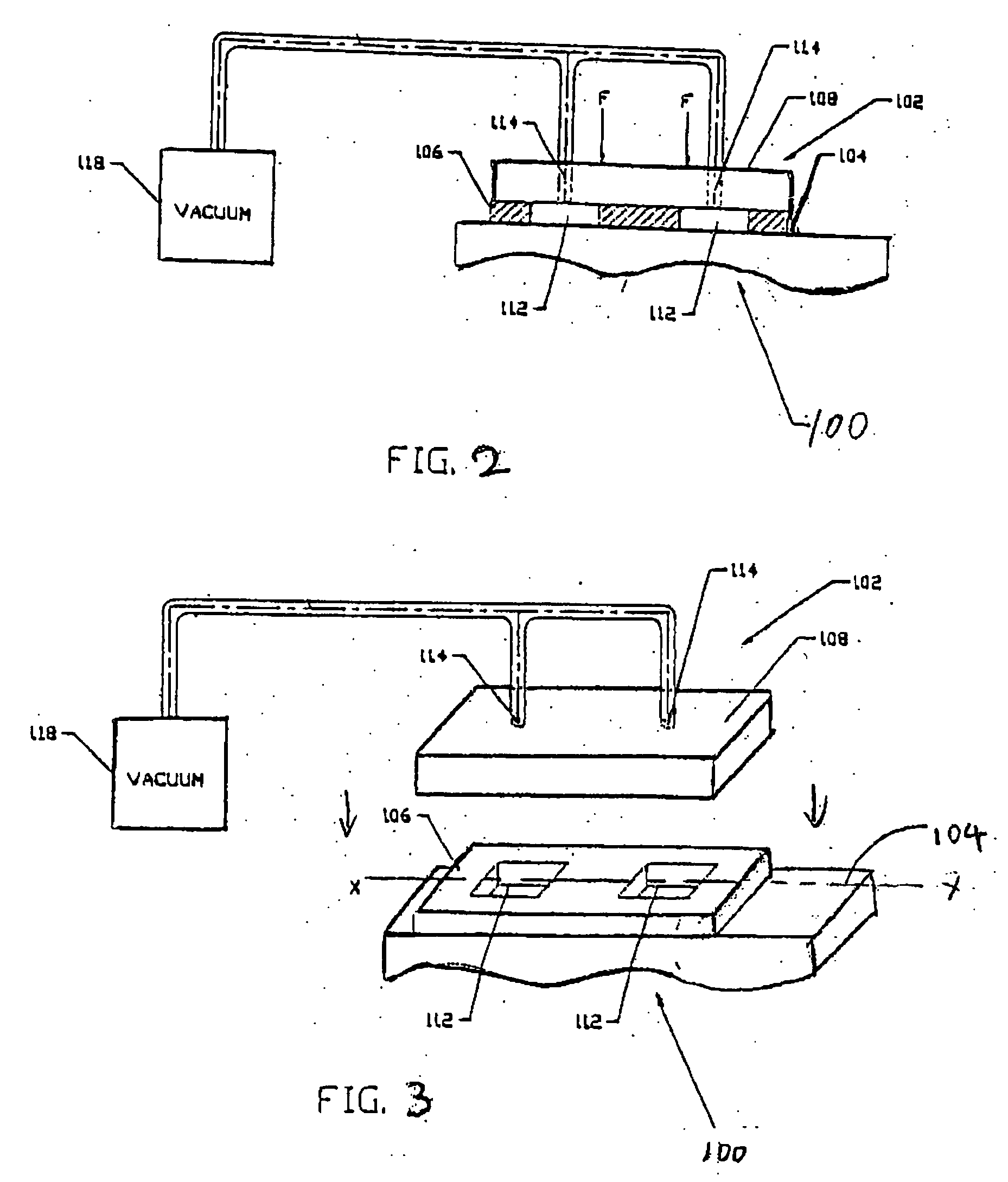Constrained layer damping assembly
a damping assembly and tensioning technology, applied in the direction of shock absorbers, machine supports, mechanical equipment, etc., can solve the problems of high energy loss, and achieve the effect of minimizing the amplitude of resonant vibration
- Summary
- Abstract
- Description
- Claims
- Application Information
AI Technical Summary
Benefits of technology
Problems solved by technology
Method used
Image
Examples
Embodiment Construction
[0016] The invention will now be further described in detail with reference to the following preferred embodiments. FIG. 2 illustrates a cross-sectional view and FIG. 3 illustrates an exploded view of a constrained layer damping assembly 102 according to one preferred embodiment of the present invention. The assembly 102 is positioned on a top surface 104 of a device body 100. It should be understood that the constrained layer damping assembly 102 can be used with any surfaces of any devices where a vibration damping is desired.
[0017] The damping assembly 102 is formed by at least a portion of the top surface 104 of the device body 100, a substantially gas impervious damping layer 106, which overlies at least a portion of the top surface 104, and an inertial mass (e.g., a load element) 108 disposed on the damping layer 106. The top surface 104 is preferably planar and extends along a reference axis X. The load element 108 is preferably rigid.
[0018] The constrained layer damping as...
PUM
 Login to View More
Login to View More Abstract
Description
Claims
Application Information
 Login to View More
Login to View More - R&D
- Intellectual Property
- Life Sciences
- Materials
- Tech Scout
- Unparalleled Data Quality
- Higher Quality Content
- 60% Fewer Hallucinations
Browse by: Latest US Patents, China's latest patents, Technical Efficacy Thesaurus, Application Domain, Technology Topic, Popular Technical Reports.
© 2025 PatSnap. All rights reserved.Legal|Privacy policy|Modern Slavery Act Transparency Statement|Sitemap|About US| Contact US: help@patsnap.com



